What Does Caviar Taste Like? Ocean’s Gold in Every Bite
Caviar, the luxurious delicacy of fish eggs, has intrigued food enthusiasts for centuries.
Wealthy diners and curious epicureans often wonder about its mysterious flavor profile.
Restaurants and gourmet shops present this expensive treat as a culinary pinnacle of sophistication.
Rare and meticulously harvested, these tiny pearls come from specific fish species in select regions worldwide.
Connoisseurs appreciate caviar for more than just its taste - it represents a symbol of refinement and gastronomic excellence.
Cultural traditions and culinary techniques contribute to its prestigious reputation among fine dining experiences.
Each variety offers unique characteristics that make sampling this delicacy an adventure for adventurous palates.
Let's unravel the sensory secrets behind this extraordinary ingredient and understand why it captivates global food lovers.
Taste History at a Glance
Caviar stands out as a special seafood delicacy loved around the world. This fancy food comes from specific fish eggs.
Workers carefully collect and process these eggs through drying and salting steps. Fish eggs, known as roe, can be fresh or preserved.
Fresh roe tastes much better than pasteurized versions.
Why Caviar Is So Pricey
Caviar comes with a hefty price tag. Many people wonder why this small fish egg dish costs so much money.
Real caviar starts with special fish from waters near Caspian and Black Sea regions. Fishers also use other fish types like salmon and trout to make similar products.
Different fish can create unique egg experiences.
Fish eggs not from sturgeon might be called alternative caviar.
High prices mark this special food as super fancy. Some caviar can cost between $8,000 and $16,000 for just one kilogram!
Fish producing these eggs are becoming scarce. Collecting fish eggs takes significant time and effort.
Each step demands careful work and special skills from trained workers.
Caviar Tastes From Around The Globe
Caviar sits on crackers or bread as a small topping. People from Greece and Rome first kept caviar for wealthy guests.
People noticed this special trend in the late 1800s when many sturgeon swam in US rivers.
Sturgeon populations dropped quickly because fishing teams caught too many for their eggs.
Fishing groups took more fish than nature could replace. By the 1960s, caviar became super expensive because so few fish remained.
Right now, beluga sturgeon from Caspian Sea waters make the most expensive caviar worldwide. Beluga caviar looks special with big black or silver eggs that catch people's eyes.
What Matters Most in Flavor
Egg pops release a rich buttery feel that triggers taste and smell sensors on the tongue. Scientists say eating enhances sensory experiences.
Caviar offers a hint of sweetness, nuttiness, or something hard to describe. Taste descriptions range from salty to fishy, depending on quality.
Key factors include:
How Caviar Really Tastes
Caviars carry unique flavor profiles with creamy, rich sensations. People unfamiliar with this delicacy might struggle understanding its subtle details. Serving methods play a significant role in experiencing caviar's true essence. Several key aspects matter when sampling this special food:
Grading Caviar By Taste
Caviar experts grade this delicacy into two main levels. Specific factors like taste, size, clarity, egg color, smell, and firmness determine its quality.
Grade A caviar includes the largest, firmest eggs with a subtle flavor and color. Grade B caviar offers a pleasant experience with less uniform eggs that still taste good.
Salt defines caviar's initial flavor profile. Modern preferences lean toward less salty options compared to past traditions.
Salt once preserved food and prevented spoiling. Excessive salt can harm heart health and increase blood pressure.
Caviar offers around 15 different taste experiences, with each roe batch unique.
Caviar's flavor complexity challenges new roe consumers.
Its taste feels more like an ocean sensation than a clear-cut flavor - mysterious and hard to describe precisely.
Caviar Comes In Many Flavors
Scientists found 27 different sturgeon species, with many other fish also producing fine caviar. Each species offers unique flavor profiles that change based on multiple key details.
Learn more!
Typical caviar tastes include ocean breeze notes, sea salt hints, and fresh fish delicacy.
Smooth and nutty textures mix with sweet saltiness, creating rich experiences similar to raw oysters but more intense. Want to explore?
Caviar Types and Their Quality
Caviar of top quality comes from Caspian Sea countries, where sturgeons like Osetra, Sevruga, and Beluga live. Russia and Iran have led caviar production for centuries, creating the most famous and sought-after varieties worldwide.
China now plays a big role in caviar exports. Demand continues to outpace natural sturgeon caviar supplies. Prices remain high due to limited production!
Why Caviar Is Special
Caviar stands out as a special seafood treat. Its makeup includes key nutrients like B12 vitamins, protein, and amino acids that support healthy living.
Crafting this delicacy requires careful attention, significant time, and hard work from skilled professionals.
Hard To Find
Sturgeons take many years before female fish can make eggs. Species differences mean some need seven to 20 years to reach egg production. Female beluga fish might require up to 20 years before becoming mature.
Female sturgeons spawn just occasionally through their long lives. Caspian caviar remains most prized among fish eggs. Wild caviar trade works to shield endangered sturgeon populations from complete disappearance.
Short Storage Time
Caviar tastes best with just a bit of salt that helps its natural nut-like flavor come forward. Salt makes this special fish egg type called malossol stand out, but it stays good for only a short time.
Handpicked Only
Caviar packages include a special guide for taking out eggs by hand. Workers carefully take out the eggs from fish, wash them, and prepare them gently.
Workers check through nearly two million eggs and remove any that don't meet quality standards.
Different Caviar Varieties
Caviar comes from fish and changes based on nature, conditions, and handling. People can find plant-based caviar if they want something different from traditional fish eggs.
Plant versions might not match real caviar's taste, but they offer an interesting alternative.
When talking about true caviar, some experts compare it like wine - Oscietra might beat lower-quality Beluga depending on specific details.
Serious food lovers recognize subtle differences. Key types include:
Beluga And Beluga 000 Types
Caviar from waters between Iran and Russia brings top-quality fish eggs. Species creating these special eggs swim in dangerous conditions near Caspian Sea zones. United States law blocks bringing this specific fish product inside national borders.
Special fish making these eggs eat many different foods in their underwater world. Eggs from this type of fish stand out because they look perfectly round. Size matters with these particular eggs, which grow bigger than other fish eggs.
Experts judge these eggs by color and number markings. Crystal-grey shades show top quality. Smaller zero numbers mean better egg selections. Dark grey color signals most prized caviar selections.
Oscietra, Ossetra, or Osetra
Oscietra caviar shows golden-brown colors with occasional green or dirty ivory shades. Size runs slightly smaller compared to beluga, with flavor notes that mix complexity and nuttiness plus a gentle lingering taste.
Sampling reveals subtle fish-like qualities that feel less smooth than beluga, which some experts actually prefer. Sturgeon producing this caviar eat many things and swim smartly near ocean floors, helping them dodge dangerous hunters through quick movements.
Sevruga Caviar
Sevruga caviar sits at the bottom of caviar rarity, featuring smaller fish eggs compared to oscietra and beluga varieties. Fishers collect these specific eggs from sevruga sturgeon. Experts grade these delicacies based on their color shades, with most samples showing a deep jet-black tone. People notice its stronger flavor profile, which delivers a sharp sea salt punch when tasting.
Other caviar types include:
Baerii, Baika or Siberian
Caviar from sturgeon Acipenser baerii offers smooth, clean flavors that wash across your palate with crisp freshness.
Sterlet
Caviar sterlet sits at top levels of fish eggs. Rich people used to enjoy this special seafood.
Small golden beads glimmer inside each delicate portion.
White Sturgeon Caviar
White sturgeon swims in waters near California and grows in Italian farms. Species comes from Acipenser transmontanous swimming through Eastern Pacific Ocean regions.
People notice mild characteristics when sampling this fish type. Smooth cream notes blend with soft butter-like qualities during tasting experiences.
Close connections exist between white sturgeon and oscietra varieties, making them similar in overall fish family groups.
Kaluga
Golden eggs from Huso Dauricus sturgeon dance on your plate like precious gems. These special eggs come from sturgeons swimming in China's Amur River.
Shimmering between light brown and deep golden colors, these eggs carry an elegant and robust flavor. Most of these eggs start their journey in Chinese waters, offering a refreshing taste that captures the essence of their unique origin.
Daurenki
Hybrid caviar from Huso dauricus and Acipenser schrenckii creates special eggs. These eggs stand out with their larger size and deeper umami flavor compared to baerii caviar.
Platinum
Prized sturgeon caviar carries rich grey to black colors with smooth hints of nutty flavor. Delicate pearls shine with deep, complex taste that brings luxury to any meal.
Schrenckii
Japanese Acipenser schrenckii caviar comes with a special charm. Rich flavors mix nutty and buttery notes inside golden-amber brown pearls. Waters near Russia and China serve as natural homes for these special fish.
Hybrid fish now produce alternative caviar selections. Fish farmers raise these swimmers quickly, which helps lower market prices compared to traditional methods.
Signs Of Bad Tasting Caviar
Water or sparkling drinks help clean your taste buds when sampling different caviars. You want to make sure the caviar keeps its usual high quality.
Take a quick look around!
Pasteurized Or Not
Egg liquid that feels a bit thicker shows the caviar has been well processed through pasteurization.
Signs Of Spoiled Caviar
Caviar can have specific problems and signs of damage that show up in different varieties. Defects might happen during handling or keeping the fish eggs, which can come from both processing steps and storage conditions.
Smell And Sharpness Check
Sharp taste with a mild sour hint marks a key problem for sturgeon and salmon. Salmon roe shows up as something different from your usual canned salmon.
Fat chemical makeup explains this issue. Low fat levels typical in many standard fish caviars cause this specific characteristic.
Rubbery Feel
Salmon roe with high maturity makes caviar tough to enjoy. Scientists worked on methods to soften sturgeon caviar that became rubbery through freezing and careful thawing processes.
Bad Or Unusual Flavors
Caviar might develop different flavors based on how fish eat and where they live. Fish sellers say these unique tastes give the fish eggs a special nutty quality that people should enjoy.
Metal containers without proper protective coating can make caviar taste strange. Caviar can pick up weird metal flavors from the edges and tin material if it stays in unprotected containers for a while.
Presence Of Crystals
Small white crystals that can't dissolve and have no smell, measuring 0.1 to 1 mm, specifically impact sturgeon caviar.
Protein breakdown creates these crystals, mostly made of tyrosine and similar amino acids. Salt levels in caviar make this occurrence more likely.
Dried Out Texture
Caviar layers can easily dry out when exposed to air or placed in overly absorbent packaging materials. Wood boxes, cotton linings, and non-vacuum containers often cause problems with the top layer of caviar.
Bacterial growth or oxidation signs on dried-up layers might spread quickly. Mixing or turning containers could potentially ruin the entire batch of caviar if these spoilage indicators are present.
Different Caviar Colors
Color changes in caviar types are not problems unless they show signs of going bad, like salmon or whitefish getting darker.
Black Sevruga Caspian caviar has smaller eggs that can taste good, but people might like Osetra better because of its less grey color.
Broken Egg Membranes
White, smooth egg skin splits open, releasing its inner yolk as a burst egg membrane. Certain Iranian grade No. 1 eggs might show signs of these split membranes.
Such occurrence signals poor drainage following salting, despite no excess liquid and with membrane ruptures present.
Presence Of Unwanted Particles
Impurities show up like partially cleaned eggs with leftover tissue bits or unnecessary tissue remains. Top-quality caviar must have zero foreign objects or clear signs of unwanted material.
What Caviar Does for Your Health
Caviar offers omega 3 that supports healthy nervous, circulatory, and immune systems, along with essential minerals and vitamins. Sturgeon and other fish species contain important fatty acids like eicosapentaenoic acid (EPA), docosahexaenoic acid (DHA), and long-chain omega-3 fatty acids.
Research shows fish intake connects with lower risks of sudden cardiac death for healthy individuals. Medical studies suggest regular fish consumption plays a key role in supporting normal brain and eye development for pregnant women and those who might become pregnant.
Supports Brain And Body Function
Caviar packs a powerful punch of selenium, a key antioxidant that fights harmful free radicals when working with Vitamin E. This nutrient brings multiple health perks that protect your body's defense systems and sharpen mental performance.
Scientists confirm selenium plays a critical role in keeping your thyroid working smoothly. Pairing caviar with fresh vegetables like cabbage or lettuce and lean protein helps balance its rich nutrients and sodium levels.
Helps Prevent Heart Disease
Caviar contains B12, meeting daily vitamin requirements. This vitamin boosts red blood cell production and supports fatty acid performance.
People lacking B12-rich foods may face several health challenges:
Increases Immune Strength
Some fish like sturgeon and salmon provide top natural omega-3 sources. These acids stop blood from clumping, lower chances of heart attacks or strokes, and keep arteries healthy.
Omega-3 fatty acids help white blood cells make antibodies when someone gets sick. Caviar can also help people with depression feel better because of its high omega-3 content.
Builds Muscles
Caviar provides key minerals for strong bones and muscle health. Key nutrients like phosphorus and calcium support body functions.
High vitamin D levels help people absorb calcium from different foods.
Minerals and vitamins in caviar support brain and body wellness.
Important vitamins like A, E, and C boost immune system strength. Caviar contains significant amounts of iron, zinc, calcium, and magnesium.
People can enjoy caviar as a healthy diet choice. Drinking pineapple juice alongside caviar helps complete nutritional needs for the body.
Great Dishes That Use Caviar
Small steps help you enjoy caviar like a pro. Tasty fish eggs deserve special care when sampling. Caviar needs delicate handling to savor its rich flavor. Here are smart tips for experiencing this fancy seafood treat:
Smoked Salmon Caviar Benedict
Some slices of top-rated smoked salmon help me craft delicious Smoked Salmon Eggs Benedict with Caviar for my Sunday brunch meal.
Preparing this dish works easily for group meals.
Simple tips about caviar garnishing and salmon storage make everything smooth. You will enjoy this tasty recipe.
List Of Ingredients
Steps To Follow
Egg Benedict
Cook until liquid reduces by half.
English Muffins & Smoked Salmon
Move eggs to water-filled bowl.
Sprinkle small amount of lemon juice.
Caviar
Cover with hollandaise sauce and caviar.
Caviar With Potatoes And Horseradish
Potato lovers enjoy a special twist with caviar and horseradish. Twice baked potatoes offer something unique for cold days when regular potato salads feel boring.
Microwave cooking works perfectly when kitchen ovens are full. Simple steps help anyone make these tasty treats quickly.
How To Prepare
Set oven heat to 400oF.
Poke potatoes with a fork in multiple spots. Warm them in oven on center rack for 45 to 60 minutes. Another option is microwaving on medium for 20 minutes, flipping midway.
Lower oven heat to 375F.
When potatoes cool down, slice them in half and scoop inner part into a bowl. Place potato skins in a baking dish.
Mix sour cream, horseradish, milk, chives, chopped dill, pepper, and salt into potato insides. Salt grinders work well here. Blend until smooth with mixer or potato masher.
Warm stuffed potatoes for 15 to 20 minutes until filling feels hot. Microwave works too, taking 2 to 4 minutes.
Finish by topping each potato half with 12 teaspoon caviar, 1 tablespoon remaining sour cream, and small dill sprig.
Helpful tip: Line baking sheet with foil to prevent burning when cooking multiple potatoes.
Caviar Macarons With Cream Cheese
People seeking something different from standard cream cheese desserts should check out this recipe. Similar to French macaroons, some treats burst with rich flavor like pure delicacy.
Magic happens when two fancy ingredients mix in one dish.
Sweet surprises wait when savory creations pair with rose, champagne, or summer white wine.
Ingredients for Champagne Macarons
Champagne Macarons (Italian Meringue Style)
Directions for Champagne Macarons
Filling:
Caviar Flavor and FAQs Explained
1. Is it safe to eat caviar, even when pregnant?
Most people can safely enjoy caviar, including pregnant women, but there are a few things to remember. Always pick pasteurized caviar when pregnant to avoid bacteria like listeria, and try to eat only small amounts, since caviar (like all fish) may have traces of mercury. It’s always a good idea to check with your doctor first.
2. What are some interesting facts about caviar?
Caviar has been a prized food for centuries, enjoyed by royalty and nobility long before other famous delicacies. These days, farmed caviar has become more affordable. Fun fact: real caviar comes only from sturgeon species—there are over 20 different kinds used for caviar!
3. Are there good substitutes for caviar?
Yes! While nothing tastes exactly like sturgeon caviar, you can try trout roe, salmon roe, paddlefish roe, or even vegetarian “caviar” made from seaweed. These are often less expensive and still offer a pop of flavor and color.
4. Why does caviar sometimes taste salty or fishy?
Caviar is known for its salty, briny taste with a light fish flavor. The best caviar should taste fresh, creamy, and slightly nutty—not too strong or overpowering. The flavor also depends on the type of sturgeon and how the caviar was cured.
5. What should you drink when eating caviar?
Many people enjoy caviar with a sip of cold vodka or sparkling champagne. Some even pair it with fancy cognac! The drink should be cold and not too sweet to let the taste of caviar shine.
6. How do you know if caviar is high quality?
Look for larger, lighter-colored eggs—they are usually considered better. Top-quality caviar feels firm, tastes mild, and doesn’t have a strong fish smell. Listen closely: some experts say good caviar even makes a faint “purr” sound when the eggs rub together!
7. How long does caviar last after opening?
Once opened, caviar should be kept very cold, close to your freezer section, and eaten within a few days for the best taste. Unopened, it usually lasts up to a month in the coldest part of your fridge.
8. Can caviar improve your mood?
Caviar is full of healthy omega-3 fatty acids, which some studies say can help with mood and brain health. In the past, it was even used as a natural way to help with sadness and depression.
Try Out Caviar’s Unique Taste
Caviar stands as top-tier luxury food with incredible taste. Caviar comes from different sturgeon fish, but beluga remains rarest and most expensive. Black gold costs nearly $3,500 per pound.
People should sample multiple caviar types before deciding personal preference. Each person might discover a special sturgeon roe they truly enjoy. Some might want to explore various caviar flavors for cooking experiments.
Readers can share comments below about their caviar experiences. Spread word with cooking friends who want restaurant-quality meal upgrades. Chefs could find exciting new ways to enhance dinner plates with this delicate fish delicacy.


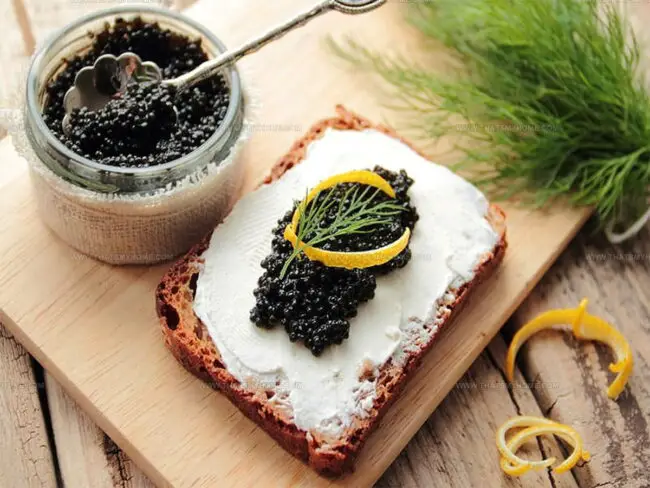
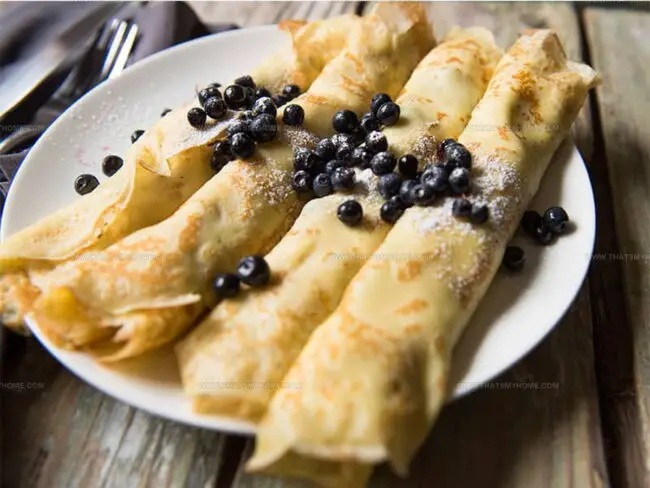
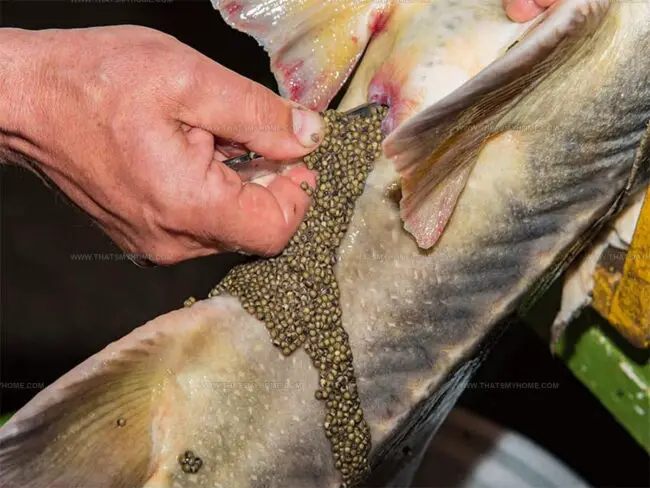
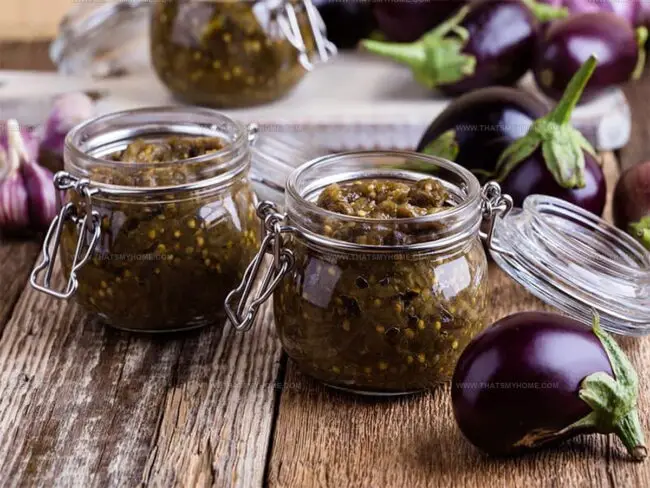
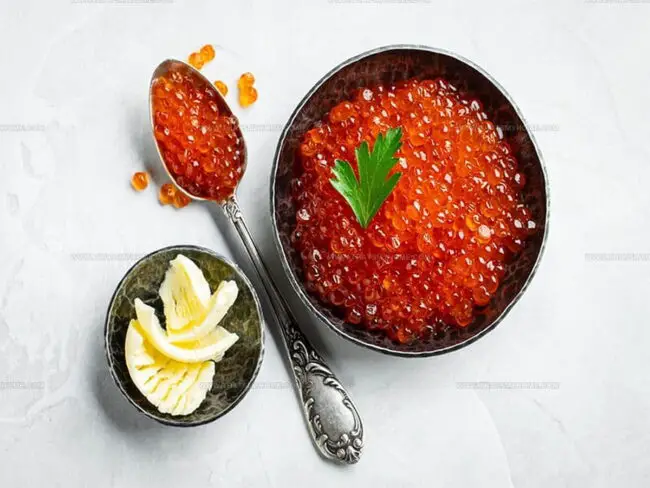
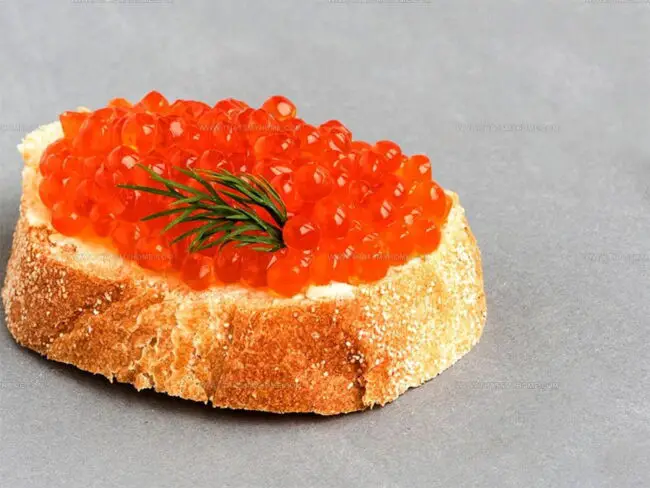
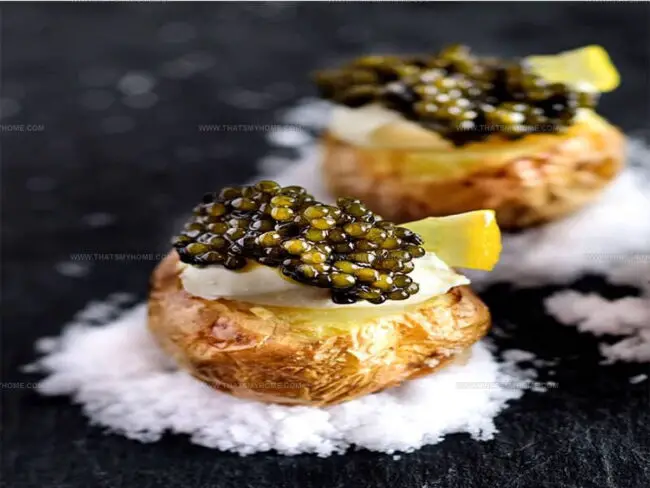
Mary Ellen
Expertise
Education